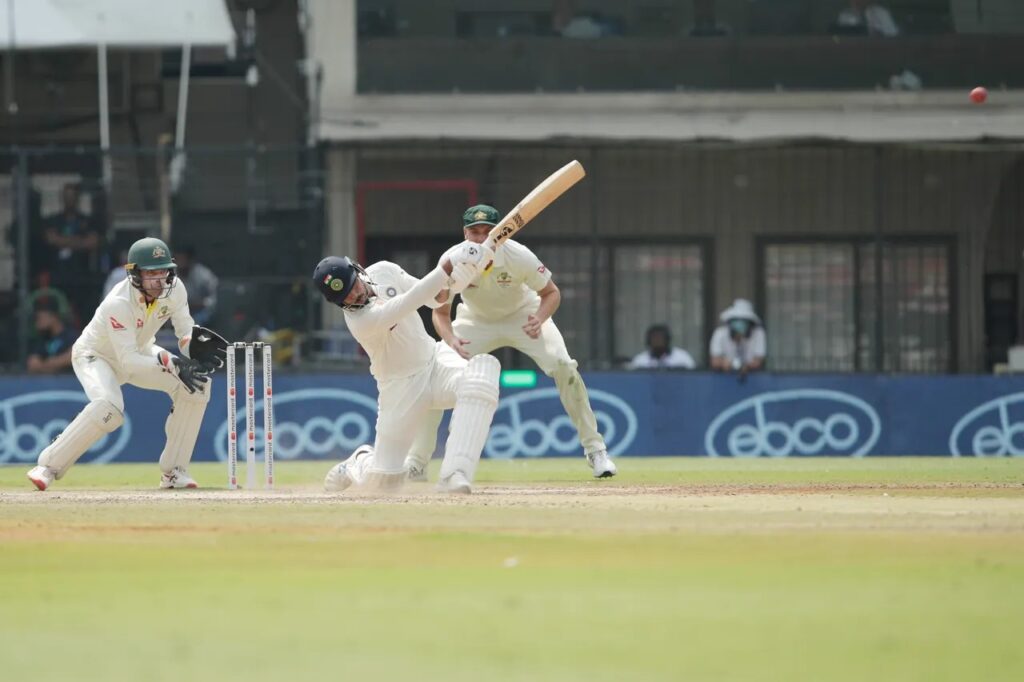
-Atreyo Mukhopadhyay
Expectations were great. They started growing after news broke that Rohit Sharma had won the toss and decided to bat. Not used to watching Test matches in their city that often, people of Indore had started flocking to the Holkar Stadium from early in the morning. Their joy was about to peak after the Indian openers creamed a few boundaries off the new ball bowlers. The total read 26/0 after five overs.
That’s when the mood started changing. Disbelief turned into a sense of resignation in a matter of overs as India went to lunch at 84/7. Many started leaving the stadium at the tea break, with Australia seemingly in command of the third Test after being hammered in the first two. There were glum faces all around. The Tricolour painted on their cheeks was not as bright as it was in the morning.
The pitch offered vicious turn from the beginning, much more than in Nagpur and Delhi. But that was the same for both teams. There was uneven and inconsistent bounce. A few deliveries kept low and some kicked up from unexpected lengths. That, again, was the same for the two teams. So what did the two teams do differently that they ended the day in such contrasting positions?
The first reason is the difference in approach and application of the Indians and the Australians, particularly in batting. Second is the difference between the plans and execution of plans of the spinners of the two sides. Third is a slightly questionable call by the Indian skipper and fourth was a bit of luck, which did not favour the home team looking for the win that will seal their place in the World Test Championship final.
The dissimilarity in batting was like chalk and cheese. Probably carried away by the brisk start, the Indians seemed to have got into a mindset that this Australian attack could be dominated. Even though there were puffs of dust flying from the pitch when Mitchell Starc and Cameron Green were bowling, the home team batters did not pay heed. At least four of the specialists got out playing forcing shots before getting accustomed to the nature of the surface.
Rohit played an absolute shocker of a shot, attempting a heave towards the cow corner in the first over of left-arm spinet Matthew Kuhnemann. Cheteshwar Pujara tried to force Nathan Lyon in front of square on the off side, the ball spun sharply and kept a bit low to castle him. Shreyas Iyer and Ravindra Jadeja also fell while attempting strokes off the back foot and all three were guilty of trying those shots before having spent enough time in the middle. In short, they invited trouble.
Usman Khawaja in particular and Marnus Labuschagne to an extent demonstrated how the job was to be done. They did not try anything fancy, resisted the urge to play square off the wicket and were happy rotating the strike. Labuschagne became more conscious of this after being bowled by a Ravindra Jadeja no-ball when on zero and hardly went for anything similar thereafter. Lessons learnt, the duo rarely attempted the sweep shot and concentrated on playing as straight as possible.
This made things tougher for Jadeja and Ravichandran Ashwin as the left-right pair forced them to alter their lines and plans by taking those singles. Khawaja hit four fours and Labuschagne one. This shows how well they ran between the wickets during their second wicket partnership of 96, which has the potential of turning out to be the match-defining one.
And this is where the Indian spinners lost the plot in the second session. Unlike their Australian counterparts, who initially did not know what kind of purchase they would get from the pitch, Jadeja and Ashwin knew exactly what to expect. In hindsight, that probably made them overeager. They started believing that a wicket was just around the corner and went on an overdrive trying too many things instead of keeping the ball in the right channels and let the pitch do the rest.
Thirdly, it’s said that on a pitch where the ball grips the surface and turns, pace bowlers who hit the deck hard can also get some help. Like spinners, they too get the ball to grip which results in seam movement. In that respect, someone like Umesh Yadav could have been handy had he been used for more than just two overs. Delivered at his pace, if the ball keeps low on a strip with inconsistent bounce, it can be nightmarish for batters. But Rohit seemed intent on using Jadeja and Ashwin.
Lastly, the ball turned square when the Indian spinners were in operation and on many occasions, it turned just that bit more to miss the outside edge despite beating the batters all ends up. There were a few edges that hit the wicketkeeper on the pads and went past the slip fielder. That was an element of luck India needed to fight with a first-innings total of 109. Then, it was not India’s day. Three wickets in the last session brought them back, but there is a long way to go and in all likelihood, a mountain to climb to make a match of this.




